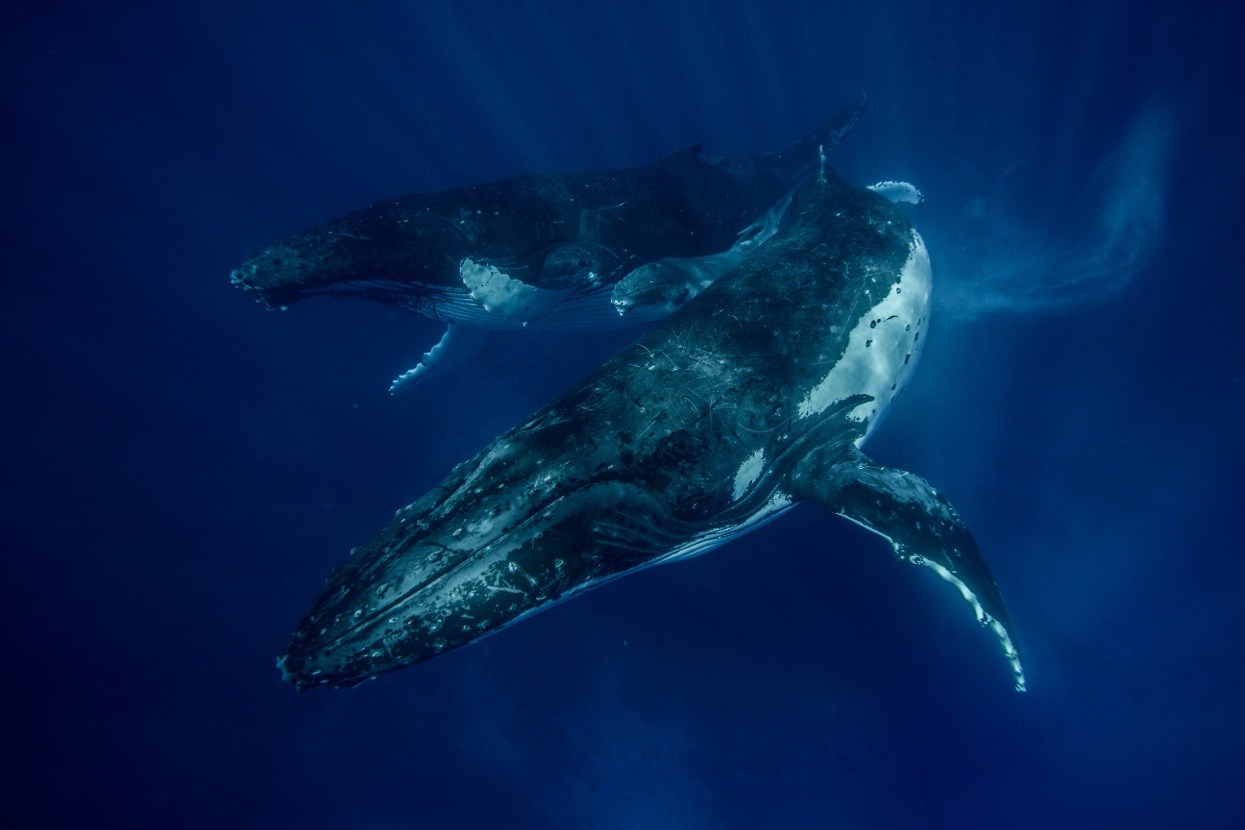“I’ve been to 85-plus countries, every continent except for Antarctica, and I have never come across a place that is better than this. Ever,” said National Geographic photographer Trevor Frost of his hometown, Richmond.
*This article originally appeared in RVA Mag #37, on the streets now at all your favorite spots.
In the springtime of Richmond in the 90s, two chairs sat on a front lawn. A sheet draped across them, they created a small, outdoor fort. A mailbox sat close by, one with a bird house attached to the back.
A young boy hid beneath the sheet, clutching a point-and-shoot camera. He looked out into the yard, keeping very still, watching the mailbox, waiting. A bluebird landed on the perch. He clicked.
“Like a painting is a piece of canvas, or a single piece of wood — what you see is what you get,” said Trevor Frost, now 32. He’s a National Geographic wildlife photographer, whose first photographs were of the bluebirds and deer in his yard. “Whereas in photography, [if] you take multiple pictures on multiple days, they’re very, very different. But for me, everything I do is born out of wanting to tell stories.”
Frost discovered his love of storytelling through photography by exploring the wildlife around his home and in the James River Park system of Richmond. His parents took him and his siblings on walks along the river nearly every day, a habit he continues even now. As a child, he found that presenting arguments in clear, persuasive ways was the best way to communicate, and using this form of storytelling to convey his love for wildlife became his career.
“I’ve always found great joy in really dissecting something that interests me, and then figuring out how can I present this in a way in which people will want to learn more about it,” said Frost, “or perhaps change the way they think about things because of what they’ve read, or seen, or done.”

Although he was born in Durham, NC, Frost considers himself a Richmond native, as he has lived in Richmond — primarily on Southside– since he was four years old. At 22, after graduating college, Frost applied to National Geographic for a Young Explorer grant. He received $5,000 to explore and map caves in the central African country of Gabon, thus beginning his career as a wildlife photographer. On the trip, he mapped 11 new caves in the area.
He went on to photograph crocodiles in Northern Australia, orangutans on the island of Borneo in Southeast Asia, gelada monkeys in Africa, wild salmon in the Sacred Headwaters of Birtish Columbia, snakes in India, and humpback whales off the coast of Tonga, an island in Oceania.
“I’ll never forget the very first humpback I went in the water with,” Frost said. “It was a mother and her calf. It definitely kind of stopped me in my tracks — took my breath away — just to see something that large, but also that inquisitive and mindful. I’ll put it this way: if you could figure out a way to take everybody on this planet that doesn’t give a shit about the natural world, and you could take them there and plop them in the water with those whales for 20 minutes, it would change their mind.”
Frost now works as an Eddie Bauer Adventure Guide, but continues his work in documenting wildlife by using his images to stress its importance.
“Why is it that I’ve decided to devote all my adult life to wildlife? I can’t come up with a better answer than the way it makes me feel,” Frost said. “So that’s selfish. But my hope is that other people realize it has this inherent power… Functional brain imaging shows us that our brains actually can change on a chemical level when we spend time with animals.”

In the last several years, Frost has openly acknowledged his struggle with anxiety and depression. Although he says it never keeps him from leaving his bed, he does become antisocial, unresponsive, and unmotivated. Spending time at his home in Richmond with his partner, their two cats, and the James River are what uplifts him. Traveling to the most wild, scenic places in the world is what reinvigorates his motivation.
“When I developed depression and I started doing this work, and spending time in these wild places, it wasn’t lost on me that when I was going to these wild places, or even if I go for a paddle on the James River, I felt completely different,” Frost said. “So naturally, I just started asking myself, ‘Well, why am I drawn to these places? Why am I devoting so much of my life to protect these places and protecting wildlife?’ The only answer I can come up with is, they make me feel a certain way that nothing else does. So the more I thought about that, the more I dreamed of telling a story so I could share that with the rest of the world. It’s not to suggest that wildlife is going to cure people — it’s not going to get rid of their depression. But it’s going to help.”
While traveling all over the world photographing animals may sound glamorous, the reality is much more grueling. Discovering stories, finding funding, spending long nights editing, and long days traveling, waiting for hours and often days on end in hot environments without producing usable material — these are all part of Frost’s reality. But most frustrating is when the work doesn’t have the influence he hopes for.
“If you look at conservation — saving wild places, fighting for clean water in your backyard, all these things — overall, we’re failing,” Frost said. “I mean, there are success stories here and there, battles are being won, but the war — we’re losing. As a storyteller that has evolved in that genre of storytelling, it’s not lost on me that we are also failing. We are either telling the wrong stories or we’re just not getting through to people.”
Frost uses multiple routes to influence others to care about the natural world around them — being an adventure guide and leading tourists into nature is one of his methods. One of his projects played a part in preserving a sacred wildlife habitat in the Canadian province of British Columbia.

In his role with the International League of Conservation Photographers, Frost helped writer Wade Davis and a team of photographers complete an expedition to the Sacred Headwaters, a sub-alpine basin and the source of three wild salmon rivers. The result was a book, The Sacred Headwaters: The Fight To Save The Stikine, Skeena, and Nass. The area, a sacred place to indigenous peoples in the area, was sold to Royal Dutch Shell in 2004 by the British Columbian government. While it was met with persistent opposition from local environmental groups, think tanks, and activists, Royal Dutch Shell’s project still felt ominous.
“That photo book was used by activists that were already running these different campaigns, trying to stop Royal Dutch Shell from coming in and fracking a million acres of land in the headwaters of these three very important salmon rivers,” Frost said. “So they were using the book, and they were using the images that we made.”
Davis was later asked to give a TED talk on the project, at which former Royal Dutch Shell President Marvin Odum was in attendance, along with several other business luminaries. According to Frost, Odum approached Wade after the TED talk and affirmed that if what Davis had said during the talk was really the case, they wanted to back out of the Sacred Headwaters project. One month later, they did exactly that; the British Columbian government also placed a moratorium on fracking.
“I think that what the book did was, there were all these activists and groups of people and individuals together, and they were doing the hard work; then we came in and pushed it right over the edge,” Frost said. “We shined a spotlight on it, and the combination of those two things, with them providing 90 percent of the work and us providing the last little 10 percent that they needed, is what got us there.”

Today, between spending time at home in Richmond and making the occasional trip to India to photograph snakes, Frost dedicates most of his energy to monthly trips to Peru — a project he describes as the most challenging, yet important one he’s worked on.
“It’s a story that is exposing, in a very raw way, someone’s life,” Frost said. “It’s someone that isn’t really excited about being on camera, but he’s doing it because he realizes the importance of the issue at hand, and the gravity of what this [project] could actually mean for other people.”
After returning home to the UK from Afghanistan with post-traumatic stress disorder and depression, a young veteran of the British Armed Forces made a failed attempt to take his life. He traveled to the Amazon to discreetly commit suicide in the wild, but fortunately aborted this mission when he became the guardian of a baby ocelot, a small jungle cat. He now spends his days taking care of this ocelot in the Amazon region of Peru, hoping to one day return it to the wild.
Frost and his partner, Melissa Lesh, are creating a documentary film to tell this man’s story, in the hope that his status as a veteran, his commitment to wildlife, and the positive effect it’s had on his mental health will convey the same understanding Frost has had all his life: that wildlife is fundamentally and biologically crucial to our wellbeing.
“You’re constantly racking your brain,” Frost explained. “How can I tell a story that is going to [reach] people that it wouldn’t ordinarily reach?” For Frost, the fact that the man this film will focus on is a veteran of the Iraq war is a good way to reach a new audience. “He’s a veteran,” Frost said. “That gives us a chance to connect with people who, in the U.S. at least, are historically conservative and don’t care about the environment. The second you mention that he’s a veteran and he served in Afghanistan, all of a sudden you win their attention over.”
Winning people over is also one of the reasons Frost travels to India to photograph snakes, or takes pictures of his friends holding snakes in their hands. By engaging with an animal that is frightening or mysterious to the average person, he hopes to make it seem a little less scary and a little more beautiful.
“We’re taking the photos similar to the way you would take a portrait of a human, trying to show that [the snake] has personality,” Frost explained. “The truth is, snakes do have personality. I’m not saying they’re as smart as an orca, or an elephant, but they’re much more intelligent than we give them credit for.”

That quest to unearth healing connections with the natural world, and animals in their natural habitats, propels Frost on regular extended trips across the world. But he still considers Richmond home, and offers compelling reasons for cherishing his home city.
“It can be a slap in the face when I come back [to a city] from the rainforest,” Frost said. “It’s easy to get trapped. But we have one of the most incredible wild areas in a city in the continental U.S. I’ve been to 85-plus countries, every continent except for Antarctica, and I have never come across a place that is better than this. Ever.”
These days, when he’s in town, Frost likes to ride his bike back to places he’s visited many times before.
“It never gets old,” he said. “There’s always something new that I’m seeing.”
Top Photo by Trevor Frost



